In December of 2024, former Google CEO Eric Schmidt sat across from Peter Diamandis and dropped what should’ve been a bomb.
It’s reasonable to expect that within 6-8 years, we’ll have a single system with 90% of the ability of an expert in every field.
A few minutes later, he added, “We don’t know what happens when such a thing exists… but we know that race is really important.”
He wasn’t describing some abstract horizon. He was describing a finish line and it is getting closer fast.
But most people didn’t flinch. They didn’t panic. They didn’t even look up because existential threats rarely announce themselves. They don’t come with sirens or breaking news alerts. Sometimes, they arrive in app stores. Sometimes, they write your emails before you do. Sometimes, they sound like podcasts that you believe are real people but are actually AI.
The race Schmidt talked about didn’t begin the day he said those words. It began years ago, when we started training the AI machine with our data, our language, our attention, and our preferences on every major content, commerce, social and search platform. The race is now fully underway. The unsettling truth? Most people haven’t even laced up their shoes.
The world is sleepwalking into the most significant shift in labor, value, and meaning since the Industrial Revolution. The scariest part isn’t what AI will do. It’s what will happen when millions of people realize they were never even invited into the room where the decisions were made.
When It Hit Me
I remember the first time I really felt it, not just conceptually but personally. I used AI to complete something I normally would have hired a team to do, each member costing over $100k to create brand plans, strategic frameworks, and creative campaigns. It worked, not perfectly, but fast enough and good enough to make me pause. Where I’d spent over $60k a month for the team now cost me $200 per month using AI and this is the worse AI will ever be.
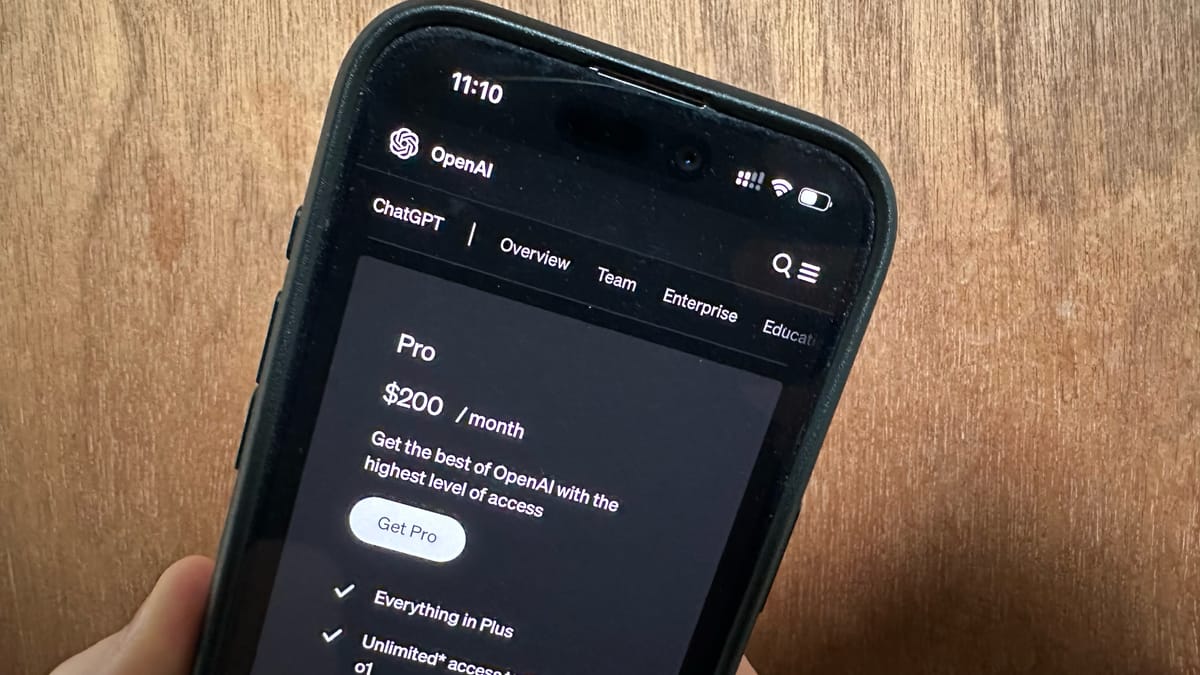
It wasn’t fear that hit me. It was clarity. Everything had shifted. A line had been crossed.
I’d had that feeling once before—the first time I checked myself out at Whole Foods, shortly after Amazon bought them.
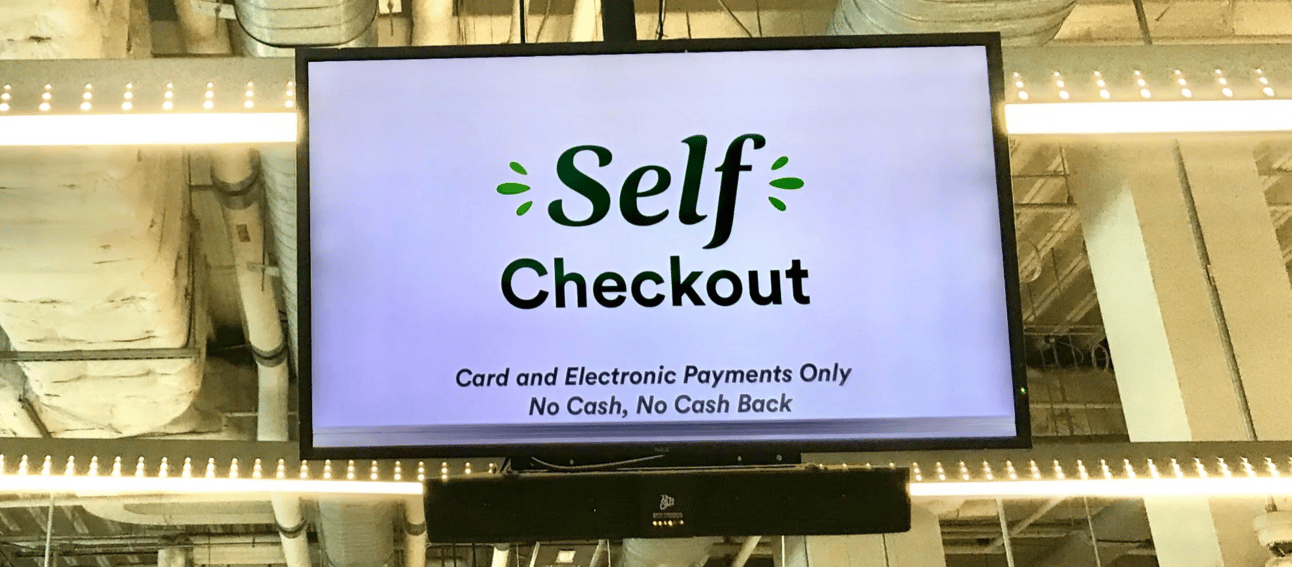
For years, we’ve been greeted by real people at the register. Then suddenly, there was just me, a screen, and a quiet little transaction. No warning. No conversation. Just a subtle redesign that marginalized the human role. There was now two clerks instead of the usual ten I was accustomed to seeing. This is a reminder, this is how systems change. Not with big public debates or massive layoffs but with subtle upgrades that reorganize who gets to participate and who does not.
We’ve seen this pattern before. In 2005, two years before the release of the first Apple iPhone, we were working with director Ben Patterson, founder of Onslot Films, when he landed the AMP’d Mobile account. AMP’d was a cellular service offering video on demand and was one of the first flip phones capable of streaming video. It was backed by MTV Networks and Universal Music Group.
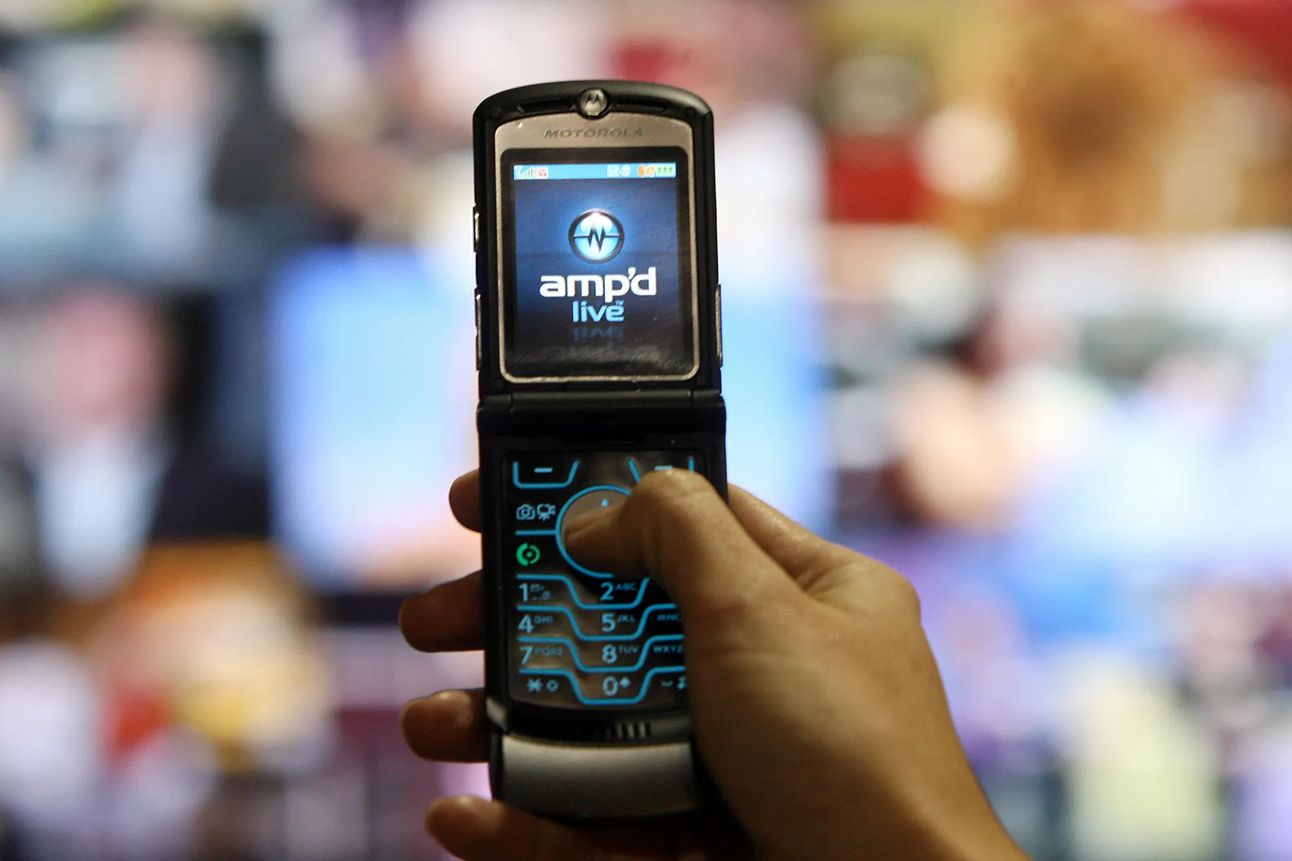
Nobody made a big deal out of it. AMP’d Mobile came and went. It was completely bankrupt by 2007. But that wasn’t the story. The story was what it unlocked. That tiny screen—that glitchy, pixelated video feed—marked the first-moment attention started shifting from the television to the phone.
It wasn’t a revolution. It was a ripple. And yet, everything changed after that. The iPhone and YouTube exploded, streaming became standard, and pocket-sized screens became the most powerful media real estate on Earth. AMP’d Mobile didn’t win. But it made the game visible.
This AI moment felt the same. Except this time, it wasn’t just grocery clerks being replaced; it was copywriters, designers, editors, and strategists. It was marketers, researchers, analysts, and creatives—the kinds of people we spent years working with, learning from, hiring, and building alongside. And now, the tools that made their skills possible were beginning to outperform them—faster, cheaper, and infinitely scalable.
This Isn’t a Tech Shift. It’s a Power Shift.
When people hear “AI is going to take 90% of jobs,” they picture factories, robot arms, and maybe someone losing a desk job in customer service. But that’s not what’s happening. What’s happening is far quieter—and far more comprehensive.
AI isn’t just coming for blue-collar or entry-level jobs—it’s already reshaping the white-collar world. Video editors. Voiceover artists. Analysts. Therapists. Teachers. Legal researchers. Recruiters. Translators. Marketers. These aren’t future possibilities. This is happening right now.
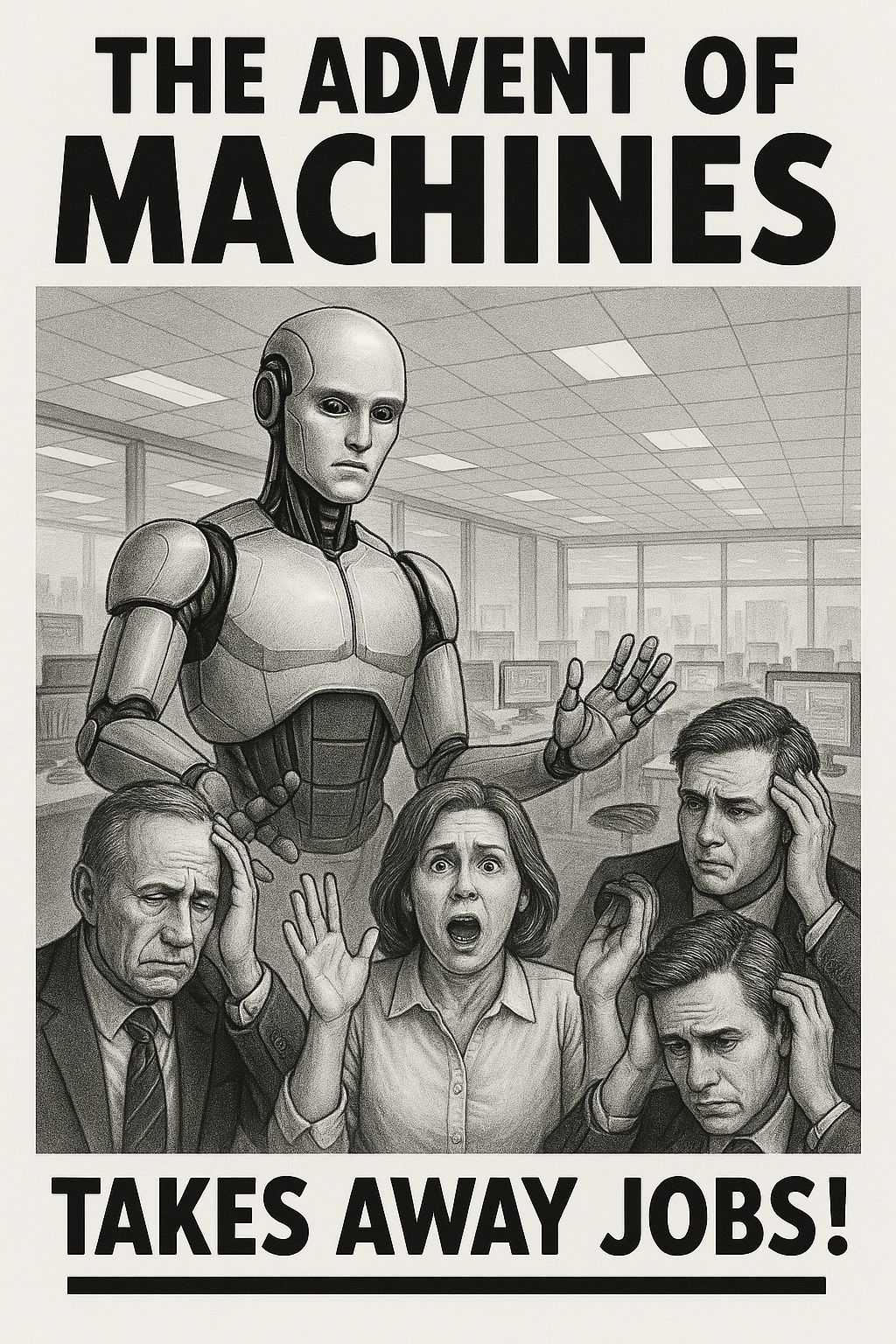
What used to take an entire team now takes a well-written prompt. What used to cost hundreds of thousands of dollars now costs a monthly subscription. You don’t need 20 hours of meetings. You need 10 minutes of clarity and a machine that doesn’t sleep.
The impact of this shift isn’t just economic—it’s structural. Because when the time and labor required to produce something drops to near-zero, the question becomes: who still gets paid, and who just disappears?
This isn’t about technology replacing people. This is about value chains being rewritten—with entire industries waking up to realize the line of worth has moved… and they’re no longer on the right side of it.
Think about what happened to the music industry when Napster hit. Think about what happened to newsrooms when social media became the front page. Think about what happened to taxis when ride-sharing rewrote local transportation.
AI is doing all of that—at once, better and faster.
But because it’s happening inside screens, inside code, inside invisible systems, people don’t recognize it for what it is: a shift in power, not tools.
This is not just about access to new technology. It’s about access to—and participation in—the economic value of a data-driven economy.
The companies who own the AI models will print wealth. The people who know how to wield them will move up the value ladder. Everyone else?
They’ll keep doing the same work… for a system that’s already stopped paying attention to them.
And here’s the most dangerous part:
The power shift isn’t coming.
It’s here.
But the interface still looks familiar, so people haven’t noticed that the engine underneath has changed completely. It’s like using a rotary phone, not realizing the lines have all gone digital.
AI has decoupled effort from output. That changes the rules of work, compensation, status, and identity. You don’t have to like that. But you can’t afford to ignore it.
Because if the last era was about who could create value, this era is about who knows how to activate and control it through system designs.
If you don’t know how to integrate, prompt, refine, and direct these tools—if you’re not in the room where the workflows are being redesigned—your relevance becomes negotiable. And eventually, expendable.
That’s not fear-mongering; that’s how systemic shifts work. The roles don’t disappear overnight; they just get marginalized quietly until you realize no one’s listening for your voice anymore.
You’re Not Too Late. You’re Too Distracted.
Here’s the part nobody wants to admit: most people aren’t ignoring the shift because they don’t care. They’re ignoring it because they’re too tired to do anything about it.
The same system that’s automating your job is also flooding your mind. With updates. Notifications. Clickbait. Endless scroll. Emotional bait. The performance of panic. The illusion of productivity.
You know that feeling. You open your phone to do one thing, and 45 minutes later, you’re angry, overstimulated, and somehow forgot what you even came for. That’s not by accident. That’s architecture.
This is the algorithm’s true superpower: not to replace you — but to dull you. To keep you reactive. Overwhelmed. Entertained just enough to stay engaged, but stressed just enough to stay stuck. This is what Survival Mode looks like in 2025. Not famine. Not war. But constant digital agitation.
And the real cost?
You stop paying attention to what matters.
You stop creating. You stop building. You stop noticing. And by the time the next opportunity passes, the only thing you’re left with is regret and a few thousand hours of content that didn’t change a single thing in your life.
We were never meant to live like this—outsourcing our consciousness to machines that only care about conversion. We weren’t built to exist in a state of low-grade fight-or-flight while tech companies monetized our micro-reactions.
But that’s where most people live now—not because they chose it, but because the system is designed to make no other choice easy.
It’s hard to plan for the future when you can’t even make it through the day without checking your phone a hundred times. It’s hard to learn a new tool when your nervous system is fried before 10 a.m. It’s hard to prepare for what’s coming when every day feels like just barely surviving what’s already here.
This is how existential threats work in the modern era.
Not through sudden explosions.
But through numbness.
And here’s the irony.
The very thing that could free you — AI — now feels like just one more overwhelming thing on the list.
And that’s the trap.
Because while you’re stuck reacting to the noise, someone else is using the quiet to build the tools that will own your tomorrow.
Humanity Isn't a Flaw. It's Our Superpower.
AI is getting smarter, faster, and more convincing. It can write and talk like us, mimicking our humor, tone, structure, and even empathy.
But don’t confuse mimicry with meaning.
AI can replicate the style. It can predict what comes next. But it can’t ask why. It can’t sit in silence and sense the room. It can’t feel the gut drop of betrayal or the goosebumps of insight. It can’t connect dots that haven’t been drawn yet. It can’t imagine a world that hasn’t already been fed into it.
That’s not a limitation.
That’s your advantage.
Because the future doesn’t need more content. It needs more consciousness.
It needs people who can think beyond the dataset, who can sense nuance, hold contradictions, listen between the lines, and tell stories that break loops instead of feeding them. AI can do what you’ve done. But it can’t decide who you want to become. And in a world where automation is inevitable, intention becomes your competitive edge. This is the paradox of the age we’re in.
The more capable machines become, the more valuable your humanness becomes—if you’re willing to stop hiding from it. If you’re willing to step out of the scroll and into the role of co-creator, curator, connector, or contributor.
You don’t need to outsmart AI.
You need to out-human it.
You don’t need to chase efficiency.
You need to chase alignment.
Because while AI might outperform you in execution, it will never outmatch you in ethics, intuition, presence, or purpose.
The current system has trained us to see ourselves as pawns on a chess board, rather than vital pieces in a larger mechanism—as workers, users, consumers. But that's never been your value. Your value is what only you can uniquely bring to the world.
Not just what you do—but why you do it. How you do it. What you see that others miss. That's what defines a creator in the new era: a perspective and point of view. Not the one who produces the most or remembers the most, but the one who chooses with clarity. Acts with conviction. Builds from a place no algorithm can access.
This is where your story changes. Not when you learn a new app. But when you remember, you never needed to become more like the machine.
You need to unbecome what they designed you to be, so you can become who you were truly meant to be.
The System’s Blind Spot: The People It’s Leaving Behind
AI isn’t simply changing how work gets done—it’s reshaping who gets to participate. The blind spot in all of this is the assumption that everyone knows this, that access to the tools automatically equals agency within the system.
But access is not equity. Visibility is not value.
The overwhelming narrative is that this technology will “empower everyone.” But empowerment without ownership is just decoration. If you don’t own your input—your data, your demand, your creative fingerprint—you’re not part of the system. You are the fuel for it.
Most platforms and gatekeepers don’t acknowledge this: the people left behind aren’t behind because they’re unwilling. They’re behind because no one gave them the map.
That’s why we built CoCreate.
We’re not interested in giving people more content. We’re building the infrastructure for people to own the role they’ve already been playing. To convert participation into compensation. To turn instinct into influence. To take the raw materials of attention, pattern recognition, taste, and demand—and turn them into leverage.
Because there are millions of people who know what matters, who know what’s missing, but who’ve only ever been told to consume.
That’s where CoCreate Media begins.
It’s not a newsletter or platform.
It’s not just a studio and media company.
It’s a network of people who understand that this isn’t about getting ahead — it’s about getting involved.
This is where we start rebuilding from the middle—not top-down, not where your data is owned by some platform that hides your impact behind a wall of metrics or inside their black box.
But a new kind of economic value chain. A new kind of social contract. A symbiotic ecosystem where the people who power the system actually benefit from the system. The machine may be getting smarter. But it still doesn’t know what to care about. That’s your job to be done.
CoCreate Media: The Problem We Are Solving
We didn’t build CoCreate Media to compete with traditional media.
We built it because traditional media has never placed you at the center of their value.
For decades, the story has been written by the top, for the top. The headlines, narratives, and editorial priorities haven’t been shaped by what people actually care about but by what keeps the system intact. Even in the digital era, most media platforms are designed around the same principle: extract attention, monetize it, and repeat.
This model rewards clicks over context. Controversy over clarity. Consumption over contribution. And the audience? Always stuck in the same role—watching, reacting, scrolling and following.
We looked at that and saw a dead end.
Because if we’re entering a world where AI will amplify the speed and scale of information, then the current model—where a handful of editors, executives, or algorithms dictate what gets seen—isn’t just broken. It’s dangerous.
Media isn’t just how we stay informed. It’s how we decide what matters. What’s real? What’s possible? And if you don’t control your media, you don’t control your narrative.
That’s where CoCreate Media comes in, we’re not a content platform; we’re an operating system for the new attention economy. One where creators, audiences, and brands don’t just interact—they co-create. One where data isn’t extracted—it’s respected and rewarded. One where the algorithms don’t guess what people want—the people actually tell us what they want.
Here’s how it works.
When users sign in, they engage with a piece of content, participate in short surveys, or leave comments. That behavior becomes data that is fed into the platform to generate demand signals—signals that tell us what people actually care about in real-time.
That demand is turned into a real-time report—a real asset—one that tells content creators and brands, this is where the culture is going. This is what people want more of. This is what they need and desire.
We use the report as a true data asset to understand what audiences genuinely want. With those insights, we partner with content creators, brands, and content investors who want to know where culture is now—and where it’s headed—so they can create content, products, and services that truly align with your needs. This forms what’s called a demand marketplace—a system where these partners access rich audience data to better decide what to make, sponsor, or support.
But in this model, brands don’t just advertise—they sponsor insights, invest in communities, and pay for attention that’s been earned, not stolen. They gain a new, more respectful way to engage with consumers and build lasting rapport. And because every participating subscriber is more than just a user—they're a stakeholder—100% of the economic value generated from this data exchange flows directly back to you, the audience, as owners of the data.
The result?
A feedback loop where attention becomes equity.
Where participation creates opportunity.
Where value doesn’t get siphoned off—it circulates.
This is what we mean when we talk about a symbiotic system. It’s not just a philosophy. It’s an economic structure. A redesign of the media ecosystem, built for collaboration instead of control.
In the CoCreate model, everyone gets a seat at the table:
The audience shapes the direction of the content.
The creators bring it to life—with partnership and shared value.
The brands don’t just advertise—they engage in meaningful exchange.
And the data isn’t sold behind your back. It works for you.
It’s not about blowing up the system. It’s about flipping the triangle—so the base finally has a voice that moves the top.
CoCreate Media is just the beginning. It’s the media engine that fuels a larger shift—a new kind of participation economy in which people aren’t content to consume. They expect to create, to own, and to shape the stories they’re part of.
Because the next era won’t be driven by clicks. It’ll be driven by clarity.
And the clearest signal wins.
Get in the Race. Change the Rules.
This isn’t about beating the machine.
It’s about refusing to be forgotten by it.
AI will keep evolving. It’s not slowing down. The companies building it aren’t going to wait for anyone to catch up. The question is no longer “Will it replace me?” The question is, “Where do I fit in the story it’s rewriting?”
And if you don’t answer that, someone else will.
You don’t have to become a prompt engineer. You don’t need to master machine learning. But you do need to know what you bring to the table—and stop giving it away for free.
Your attention? That’s currency.
Your perspective? That’s data.
Your participation? That’s leverage.
You’ve been told that your role is to consume. To follow. To scroll. But that story was written for a different system—one where your value was measured in impressions, not intentions. That system is dying and what replaces it will be shaped by the people who show up now. Joining this shift doesn’t require permission. It requires presence. It requires you to look at the tools—not with fear, but with clarity. To look at the platforms—not as destinations, but as launch pads. To look at your voice—not as content, but as a contribution.
The race is already running. You’re already in it. The only question is whether you’ll continue letting the system define your worth or start defining it yourself. CoCreate is not the finish line. It’s the starting point.
It’s the moment you stop being a passive participant in someone else’s media empire—and start becoming a co-architect of a system that gives back what it takes.
You don’t need to wait for a breakthrough. You are the breakthrough.
We’re building this platform with the first 770,000 people who understand that the future isn’t something you adapt to—it’s something you create. These are the innovators, the trailblazers, the thinkers and change-makers.
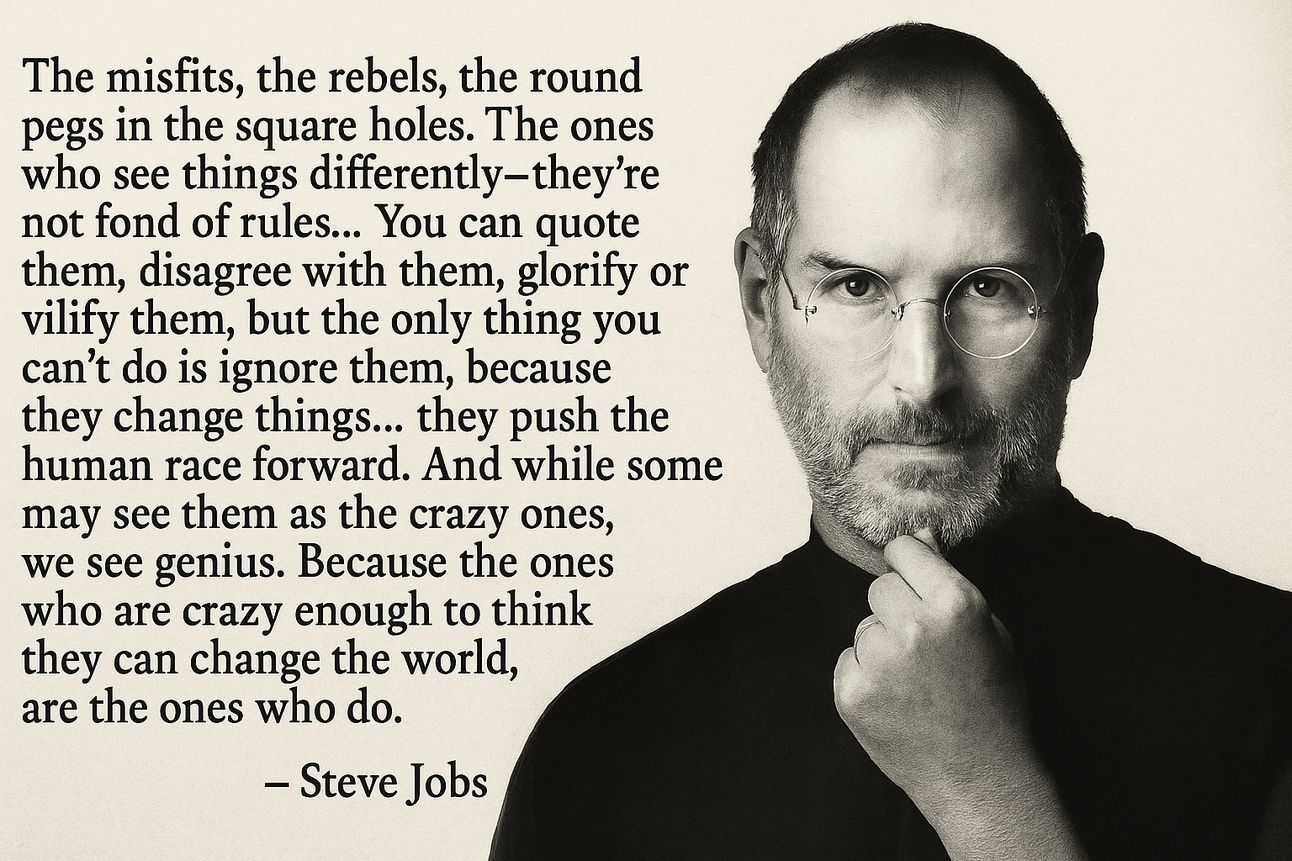
This is the foundation of what will become the greatest revolution of the 21st century. Club 770 isn’t just the ground floor—it’s the launchpad. A system that doesn’t just recognize your contribution; it depends on it. But you've got to move. The future is being built right now.
So here’s your choice: keep scrolling—or start creating. Not for the algorithm. Not for the likes. But for the version of you that refuses to be automated out of the story. Because the machine may be powerful. But you? You are the power.
The race has already begun. It’s time to take your place in it.
Lead. Don’t Follow.
Take action.

